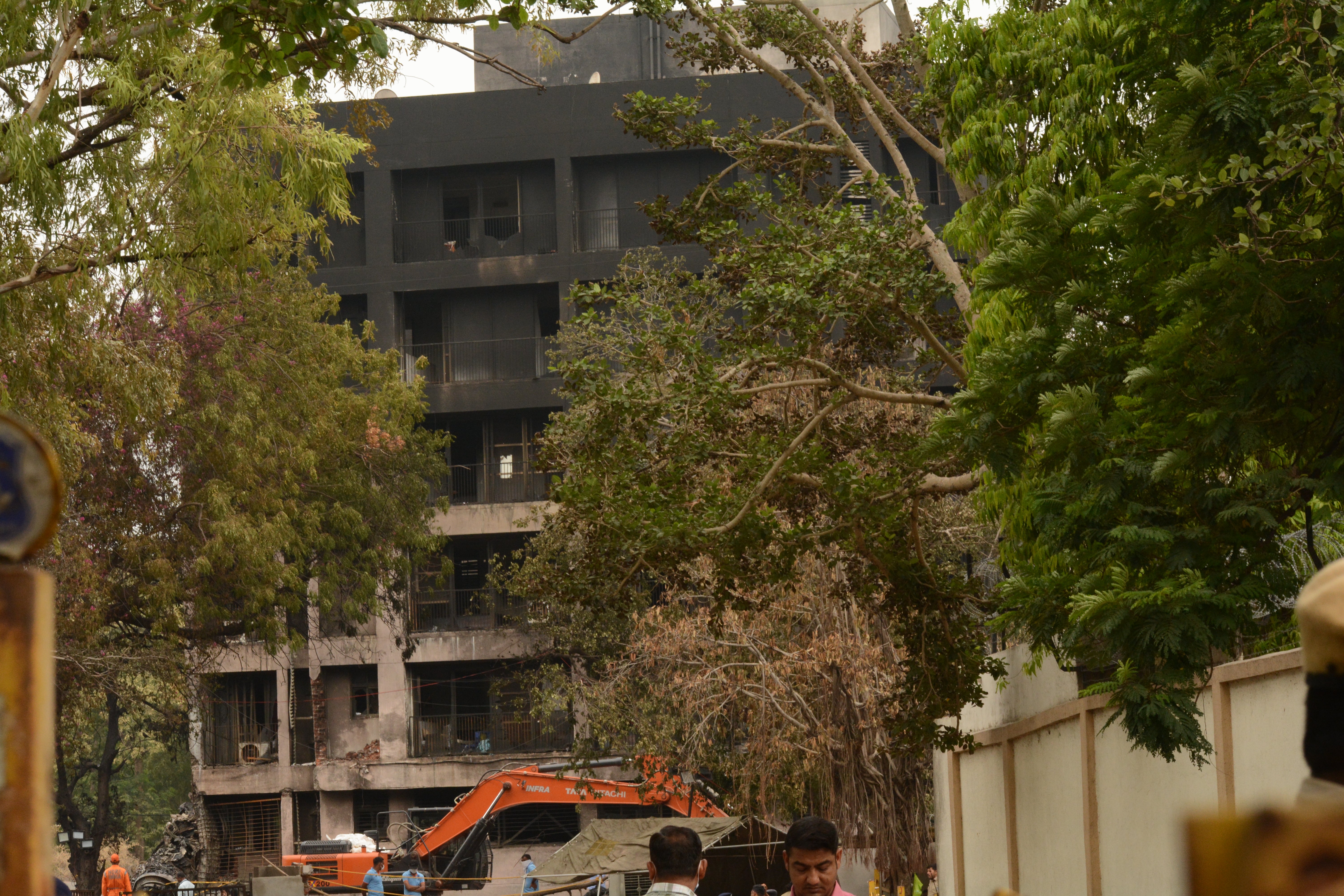Navin Chaudhary’s lunch was interrupted by a deafening explosion. Turning, he saw flames engulfing the dining area where he and his fellow trainee doctors were eating.
As the fire advanced, Mr Chaudhary escaped through a window. From the ground, he saw the tail cone of an Air India plane jutting out of the burning building.
Driven by a sense of duty, Mr Chaudhary and his fellow medical students sprang into action.
“There was fire and many were injured,” he recalled.
He immediately went to the hospital’s intensive care unit, where a stream of injured people, many suffering from burns, were being rushed in.
“I felt that as a doctor I could save someone’s life,” he said.
“I was safe. So I thought, whatever I can do, I should.”

At least 270 died when the Air India flight crashed into the campus of a medical college in Ahmedabad shortly after takeoff on Thursday.
Only one passenger among the 242 aboard survived. At least 29 others on the ground, including five medical students inside the hostel, were also killed.
Many believe that the death toll would have been higher if it had not been for the intervention of the trainee doctors and students who emerged from the smouldering hostel and rushed to save their colleagues.
Akshay Zala, a senior medical student, said the crash felt “like an earthquake”.
“I could hardly see anything as thick plumes of smoke and dust engulfed everything. I was barely able to breathe,” he said.

Mr Zala rushed to safety, running through dust and smoke. He cleaned and bandaged a wound on his left leg then joined others at the medical college’s trauma centre to treat the injured.
On Monday, the crash site teemed with excavators and workers clearing the debris. Officials inspected the building in search for clues that could enable the investigators to figure out what led to the tragedy.
Less than a mile away, trainee doctors who survived one of India’s worst aviation disasters were still working to identify the victims through DNA testing.
College dean Minakshi Parikh said that many of the doctors who pulled their colleagues out of the debris later went back to their duties to save as many lives as they could.

“They did that and that spirit has continued till this moment,” Ms Parikh said.
Images of the hostel’s dining area shortly after the crash showed parts of the aircraft and pieces of luggage strewn on the floor. Dining plates still containing food lay on the few dusty tables that were left intact by the impact.
“So that is human nature, isn’t it? When our own people are injured, our first response is to help them,” Ms Parikh said.
“So the doctors who managed to escape … the first thing that they did was they went back in and dug out their colleagues who were trapped inside.”




